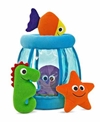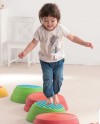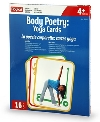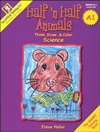Author: Diana V. Mendez-Hohmann BA, COTA
Throughout the summer we ensure that our children have all the supplies they need. We worry about their transitions from one grade to another, but as therapists and educators are we prepared to start the school year? I have created a small list of products that every special educator and therapist should have in their arsenal of education. Most of these items are small and easy to transport from classroom to classroom or school to school.
Here is a list of 15 items you need to start the year off right.
Educational Needs – The products below are perfect for the learning needs of all!
- Highlighter Strips are great for visual learners. An ideal tool for those with reading and visual processing difficulties. Brightens any written word. The plastic strips can be placed over any written material and used over and over again.
- NOVENOPs! is a hilarious game that teaches sentence structure! A card game for children of ages 6 and up. This game helps develop the player’s ability to understand the basic elements of grammar.
- Letter Treasure Hunt is a Pirate adventure with a handwriting twist! A board game with a handwriting component and the pirate theme makes it tons of fun.
- Trunks is a game where players move their bodies, make sounds and perform actions from memory!
Handwriting – Slant Boards, Paper & Grips, Oh My! Everything you need for working on handwriting skills you will find here!
- Better Board Slant Boards are made for traveling (from home to school, class to class, etc.) and can easily be stacked and stored in a classroom.
- Raised Line Writing Paper is perfect for teaching line orientation, and cueing correct letter and word spacing. Graph spacing is also used for teaching numeracy and basic addition and subtraction.
- Pencil Grip Samplers let your students experiment and find their most comfortable writing tools.
- Highlighter Paper features a highlighted lower writing area and solid lines. Because the paper is visually simplified letters can be formed and spaced correctly.
Organization – An organized classroom helps with transitioning from class to class or task to task.
- Time Timers allow students to understand the passage of time so they can monitor their own activities. Better time awareness also relieves the stress and anxiety.
- Seat Sacks are a great way for students to quickly gather supplies on a moment’s notice.
- Talk Bar is a customizable, versatile communicator that helps students visually display and describe a sequence of events.
Sensory Needs – Don’t forget about your students’ sensory needs, make sure you have all these sensational supplies in your classroom.
- Sensory Stories Cards are visual reminders of the various strategies that children can employ to cope with unpleasant sensations in daily life.
- Fidget Kit includes a group of the most popular fidgets.
- Seating Cushions help promote “active sitting”. Perfect for strengthening the muscles that support the spine and to use when sensory input is needed.
- Sensational Fun Cards have over 100 activities for parents and teachers who are looking for some great sensory games using common objects found in the home and school.




